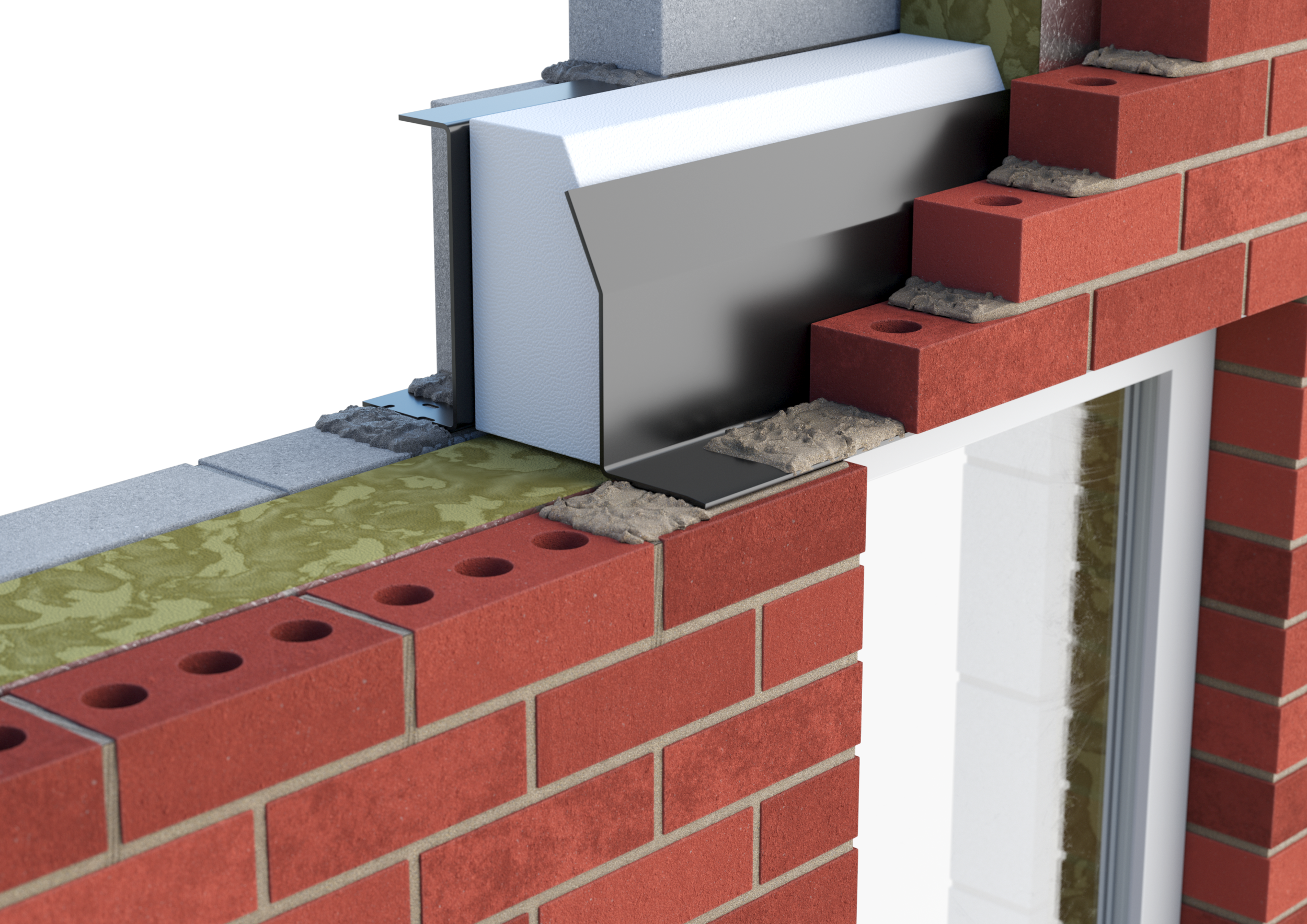We often get asked to help with lintel choice during the specification phase of a project. This makes a lot of sense – choosing the right lintel is crucial in ensuring your structure is safe and secure for your customer, so it’s an important step to get right.
Here, we’ll answer some questions about lintel choice to help you make the right decision. We’ll cover aspects such as materials, measurements, and load calculations.
What is a lintel used for?
Let’s quickly go back to basics and determine exactly what a lintel is used for. Lintels are used in modern construction to provide stability to gaps in masonry and brick structures.
When designing a house, windows will be placed throughout the building to allow light in and airflow. Of course, these windows interrupt brickwork by opening a gap in the building. To bridge that gap and provide strength to any brickwork installed above, a lintel is placed in between.
Things to know before selecting a lintel

There are three things you’ll need to know to make the right lintel choice:
Wall construction
What kind of wall are you working with? Is it a cavity wall or timber frame? Perhaps it’s a solid external/internal wall? Knowing this beforehand is crucial to understand which lintel is best for the job.
Opening and bearing requirements
On a practical basis, you’ll need to know how much of a gap to cover (the structural opening) in order to select the right lintel.
Lintels should be installed with a 150 mm bearing area at each end. This means you’ll need to add 300 mm to the size of any gaps you measure to ensure your lintel sits correctly.
Applied load
Your final key consideration when choosing a lintel revolves around its load conditions. Specifically, how much weight is going to be applied above the lintel, and what other structural materials will you use to install it?
It’s worth remembering that different types of lintel perform differently with varying loads and materials. The declared load-bearing capacity of a lintel is sometimes only achieved when they are used in conjunction with other structural elements.
Eaves lintels, for example, must be designed with concrete blocks and timber wall plates to support a pitched roof – only then will the lintel achieve its stated performance.
It's important to ensure that loads placed on the lintel do not exceed the original specifications. The concentrated loads should also be accounted for – each concentrated load must be supported over a length of no less than 200 mm over the lintel.
Applying load to the flanges of a lintel should also be avoided.
For more help, consult our video:
How to select the correct steel lintel
This video walks you through the whole process of choosing the right steel lintel for your job.
Lintel materials
There are two main kinds of lintels to choose from, each with their own advantages and drawbacks:
Steel lintels
Steel lintels are one of the strongest types of lintel available in modern times. The material itself is durable, recyclable, and able to support a variety of load ratings.
Concrete lintels
Concrete lintels are also quite popular. Due to this, they are often compared to steel lintels.
Steel lintels are the stronger solution – both in compressive and tensile strength. This means steel lintels can be used to span greater lengths. Concrete lintels, however, are generally more cost effective.
Read more: Concrete vs steel vs brick lintels
Lintel types
Lintels are categorised not only by their material but also by their intended purpose.
Read more: The types of lintels, explained
External solid wall lintels
Lintels for external solid walls are available in three distinct types:
- A single element lintel that is designed to support a single leaf of brickwork
- A two-part lintel shaped to carry two separate leaves of 215mm total thickness fair face brick wall
- A box profile lintel with a toe for use in solid brick or block walls of 200-215mm thickness
Internal wall lintels
There are also three types of internal wall lintels:
- Corrugated lintels that offer a cost-effective solution for light loads
- Channel lintels for standard duty applications
- Box lintels to deal with heavier loads and wider openings
Need more help? Trust Catnic
If you’re unsure which lintel to select and would prefer to discuss your requirements, we have a team of highly experienced and friendly engineers on hand. If you are not skilled in calculating loads, there is no need to take a risk – we are here to assist you.
Catnic steel lintels provide a number of benefits – they’re lightweight, easy to install, and durable due to our unique Duplex Corrosion Protection System. Our recently introduced range of thermally broken lintels also adds extra thermal efficiency.
More
-
![Coastal property in middle east housing complex, with external render finish]()
- Plaster Bead & Mesh
- Guide
A Specifier’s Guide to Choosing the Right Plasterers’ Beads for Hot, Humid and Coastal Environments
-
![]()
- Plaster Bead & Mesh
- Guide
How to Fix an Angle Bead to Plasterboard


